Deep Woods, the Appalachian Gametophyte, and Ohio Geobotany
1. Substrate-associated Plants
Located in Hocking County, Deep Woods is home to a wide range of plants growing on the acidic sandstone soil that is typical of western Ohio. Below are four examples along with 2 types of liverworts that I was tasked in finding:
Chestnut Oak (Quercus prinus)
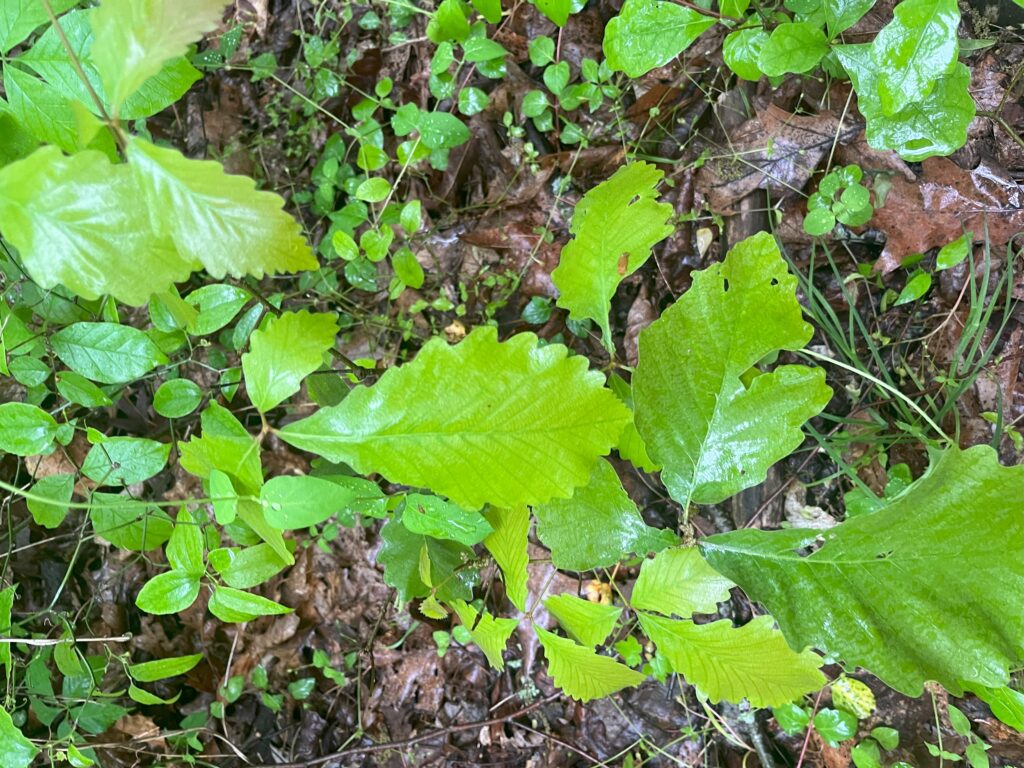
Distribution of the chestnut oak is typically limited to the elevated sandstone hills of eastern Ohio, where there is less glacial till. It produces large acorns that are eaten by a variety of wildlife such as white-tailed deer, squirrels, and wild turkey to name a few. (National Deer Association, 2013)
Sourwood (Oxydendrum arboreum)
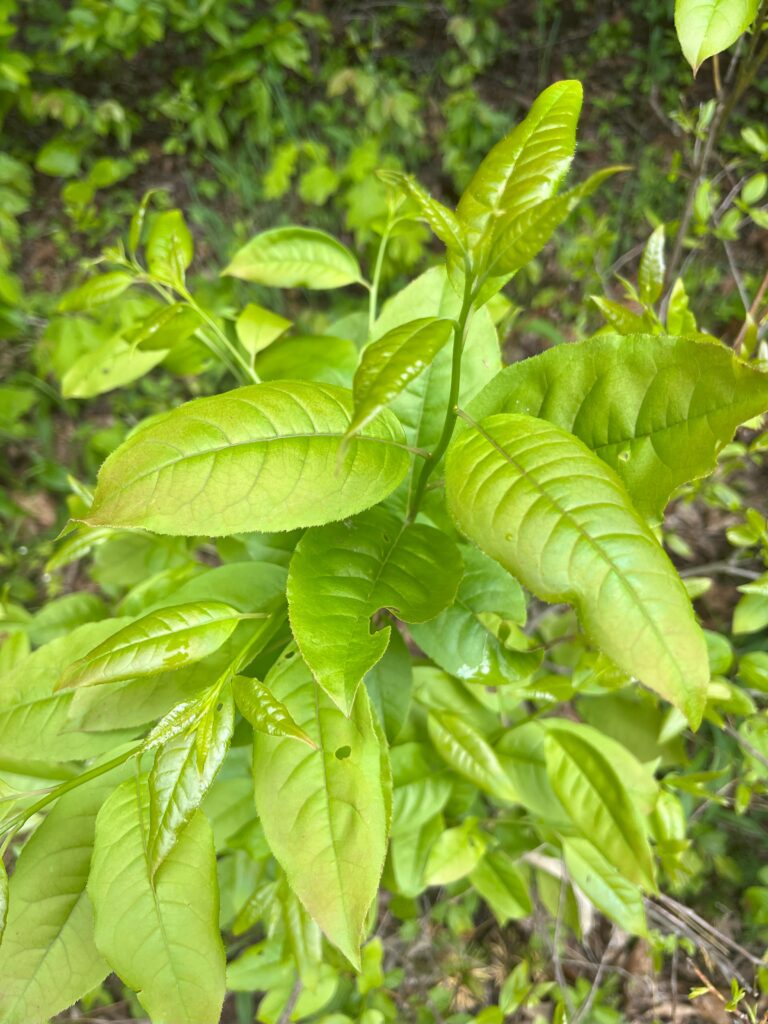
As its name implies, the leaves of this tree have a sour taste to them. The leaves of the sourwood turn a vibrant crimson color in the fall, and the twigs are eaten by deer year-round. (Petrides, 1972)
Late Low Blueberry (Vaccinium angustifolium)

This blueberry bush was found on a clearing on a large hill, where they typically thrive. They can withstand large temperature ranges, and their blueberries are eaten by wild turkeys, ruffed grouse, and gray foxes. (Petrides, 1972)
Eastern Hemlock (Tsuga canadensis)
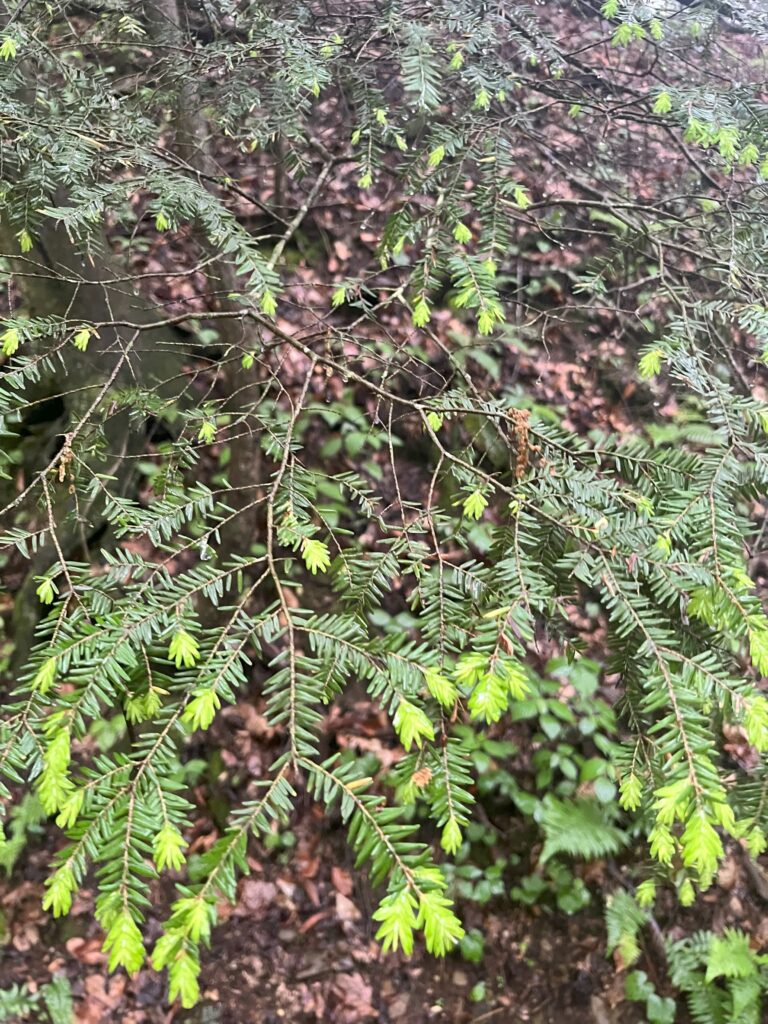
Unlike poisonous varieties of hemlock, the eastern hemlock’s twig tips and inner bark can be made into tea or used as an external wash. In the past, humans used to create a poultice out of the bark for bleeding wounds. (National Park Service, 2022)
Snakeskin Liverwort (Conocephalum salebrosum)
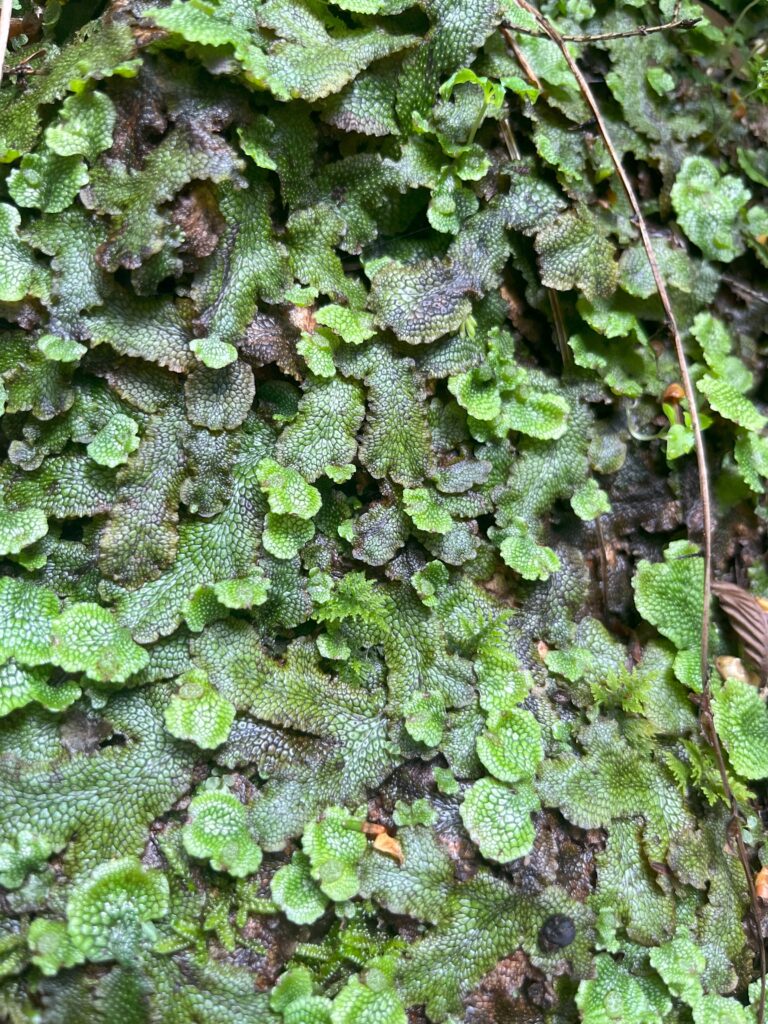
Also known as great-scented liverwort, this species of liverwort tend to grow in shaded moist areas of forests.
Grove Earwort (Scapania nemorea)

This species of liverwort was found on the side of a rock near a running stream, which is a common habitat for many liverworts of this genus. It is distinguished by its bilobed leaf shape.
2. Ferns
Cinnamon Fern (Osmundastrum cinnamomeum)
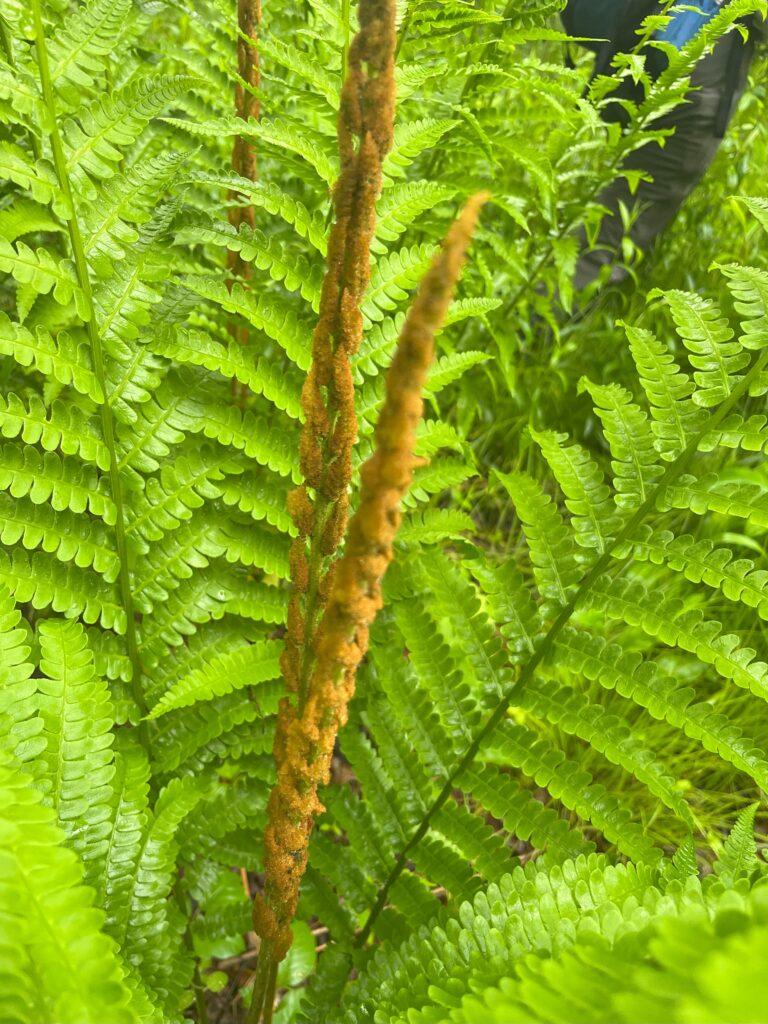
Cinnamon fern is a holodimorphic frond type, meaning that there are some fronds that are wholly producing spores on their leaves while others produce no spores. The leaves are pinnate-pinnatifid, meaning that the frond is divided into separate leaflets with the leaflets being lobed. The clusters of sori are linearly arranged on the fertile fronds in dense clusters that completely enclose the leaflets, while the sterile fronds produce no spores.
Woodfern (Dryopteris carthusiana)
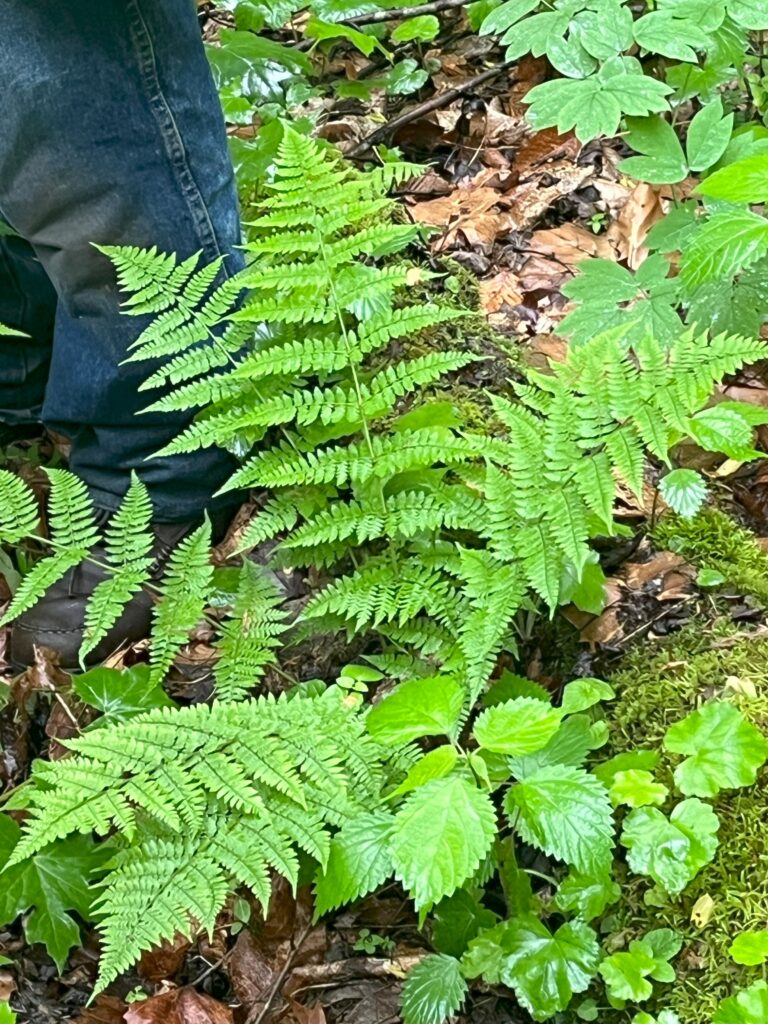
Woodfern is a monodimorphic frond type, where spores are present on the underside of all leaves. The fronds are divided into bipinnate-pinnatifid leaflets, where the fronds are pinnately compound as well as the leaflets, which are further deeply lobed or pinnatifid. The sorus type is reniform, which means that the spores are arranged on the underside of the leaf in a kidney shape, which can be seen in the below image.

Kidney-shaped sori of woodfern
Interrupted Fern (Osmunda claytoniana)
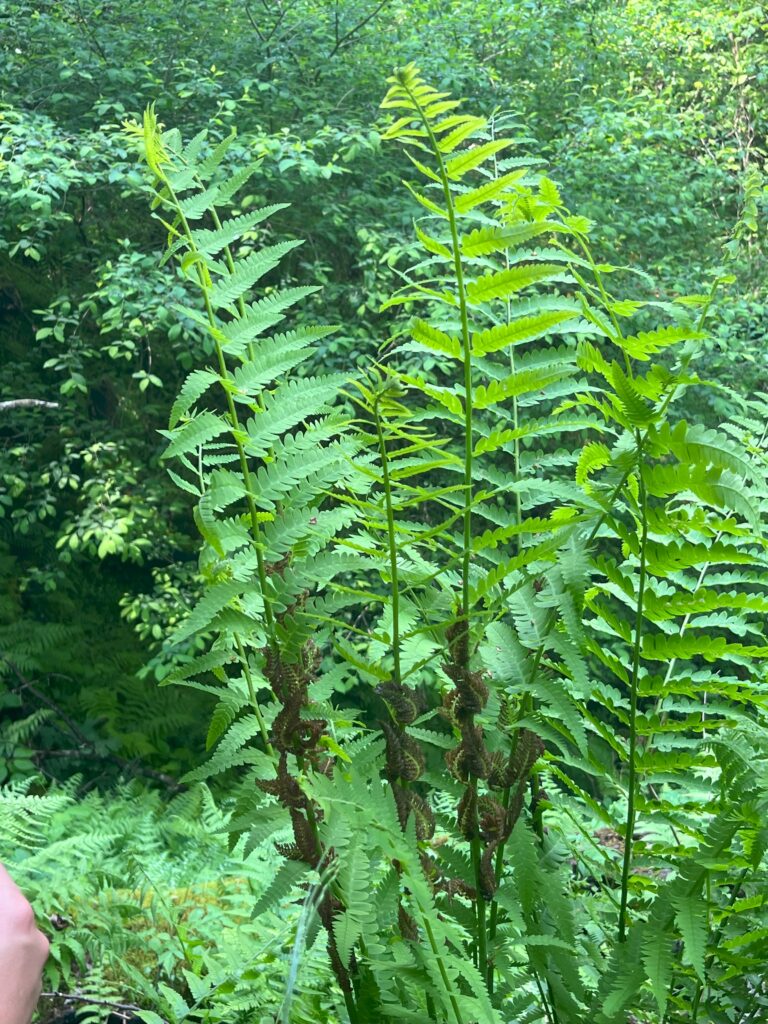
The interrupted fern is a great example of a hemidimorphic frond type, where each frond is divided into a fertile and a sterile portion. About halfway up each frond, there is a fertile portion where the leaves are wholly devoted to producing spores, while the top portion is sterile and not producing spores. The fronds are arranged in a pinnate-pinnatifid fashion, where the leaves are separated from each other while the leaflets are deeply lobed but not separated. On the sterile leaflets or pinnae, the spores are tightly clustered together as naked sori.
Christmas Fern (Polystichum acrostichoides)
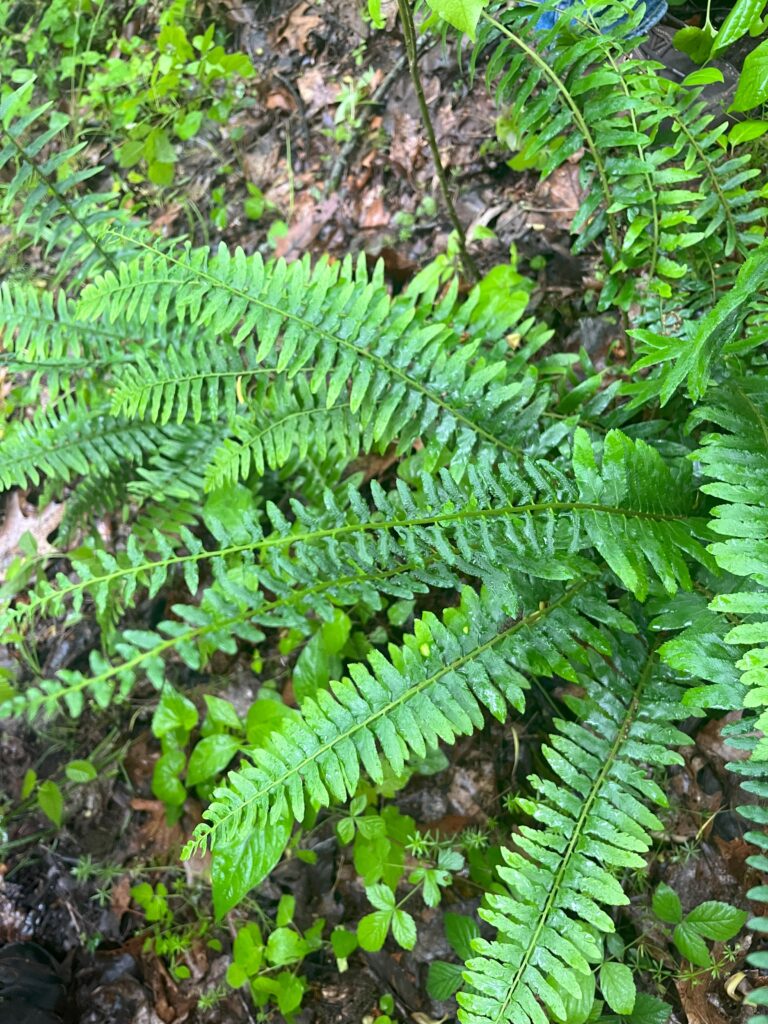
Finally, the Christmas fern is a monodimorphic type of fern that produces spores underneath normally appearing pinnae. The leaflets are divided pinnately with separated leaflets, and the sorus type is circular dots on the undersides of them.
3. Appalachian Gametophyte

The Appalachian gametophyte (Vittaria appalachiana) is a unique species of fern in that it has only been found in the wild in its gametophyte form. Normally, ferns have 2 forms, the vegetative gametophyte from which the fertile sporophyte sprout. The sporophyte is the large leafy ferns that we normally see growing in pinnate fronds that contain spores on the undersides of the leaflets. The Appalachian gametophyte is unique in that only the gametophyte has been found in the wild, which reproduces asexually to produce genetically identical gametophyte.
The way that this gametophyte is thought to disperse its gemmae is by wind, water, or animals over short distances. This is due to the gemmae being larger in size than spores from the sporophyte, and can only disperse short-distance. Kimmerer and Young specifically suggested the importance of slugs in helping with this dispersal, which would be present in the moist environment that they occupy.
The current dispersal of Appalachian gametophyte is limited to areas of the Appalachian, and in the southeastern portion of Ohio. This region of the state is unique in that it was never invaded by glaciers in the previous ice age. This indicates that the species is most suitable for areas with acidic soil that lack glacial till.
Based on a phylogenetic study of this species, Pinson and Schuettpelz (2016) found that the current dispersal of Appalachian gametophytes could not be supported by long-distance tropical sporophytes. They found that the alleles of these gametes could not be related to other current tropical species, as well as the presence of gametophytes of southern New York being truncated. The more likely reason for this dispersal is due to the species losing its ability to produce mature sporophytes sometime before or during the last ice age.
4. Invasive Plants
Japanese stilt grass (Microstegium vimineum)
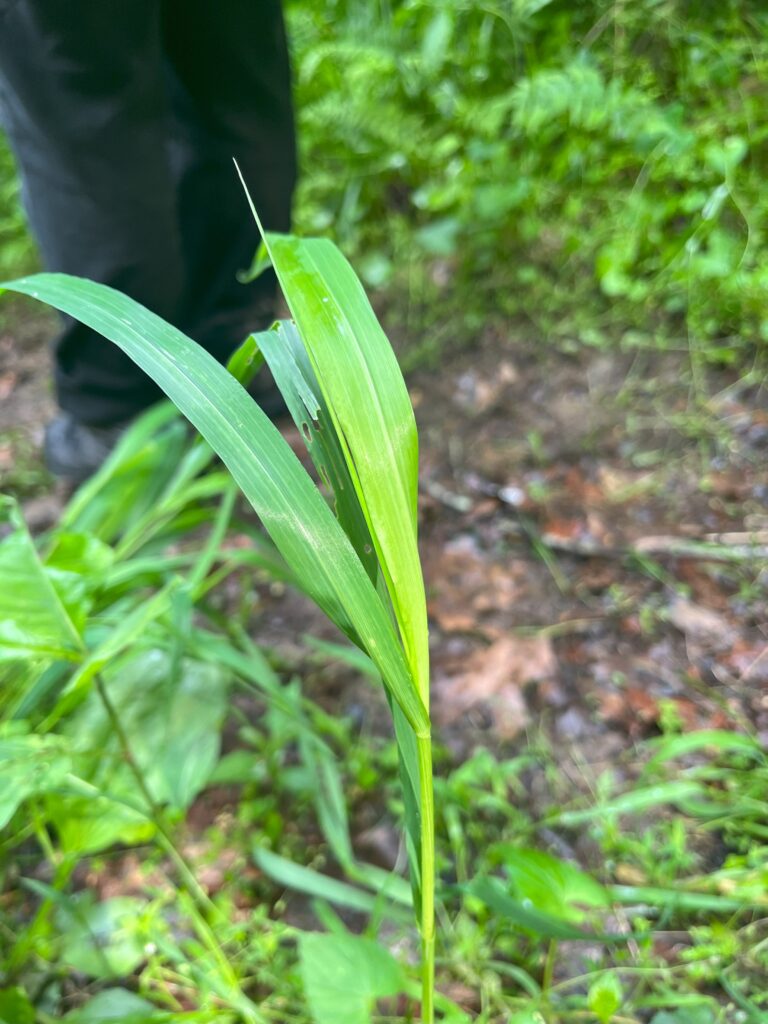
This invasive grass species is one that grows heavily in the forest understory as well as covering walking paths. It was first identified in America in 1919 after being used as packaging for porcelain products from China. As the plant grows back each spring and dies in the fall, it is recommended to remove it in June to prevent a second flush of germination. It is advised to remove the plants and roots by either pulling them out of the ground or cutting them at ground level. (PennState Extension, 2020)
Bear Corn (Conopholis americana)

The bear corn plant is unique in that it doesn’t photosynthesize light energy from the sun as seen by its lack of green pigment. Instead, it is a parasitic species that grows on the roots of oaks trees. Due to its extensive underground root system, cutting down the plants won’t prevent them from growing back next season. (Native Plant Trust)
Sources
Know Your Deer Plants: Swamp Chestnut Oak | National Deer Association
Eastern Hemlock – Shenandoah National Park (U.S. National Park Service) (nps.gov)
Pinson, J. B., & Schuettpelz, E. (2016). Unraveling the origin of the Appalachian gametophyte, vittaria appalachiana. American Journal of Botany, 103(4), 668–676. https://doi.org/10.3732/ajb.1500522
Conopholis americana (American squaw-root): Go Botany (nativeplanttrust.org)
